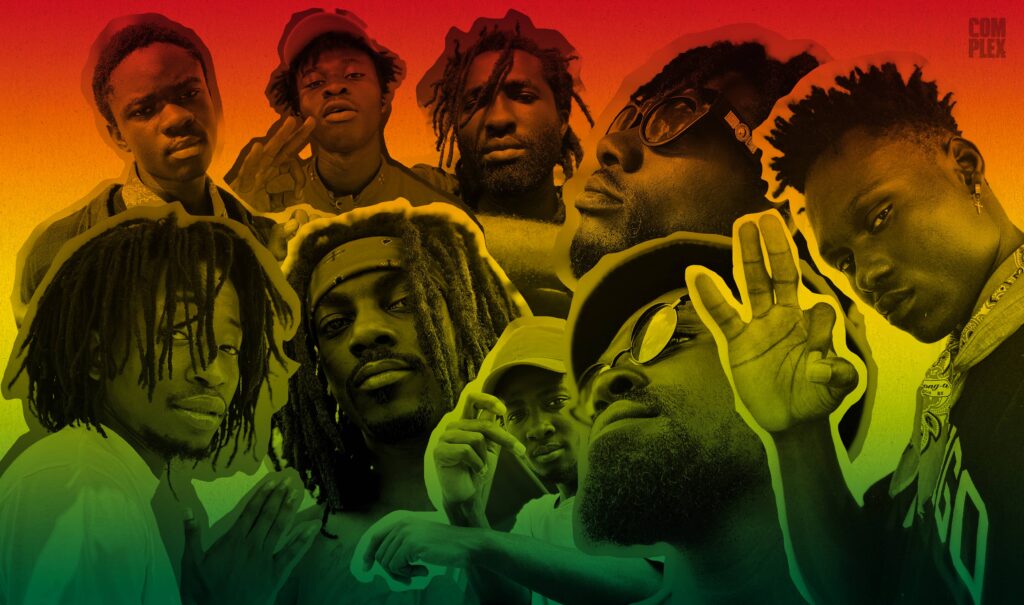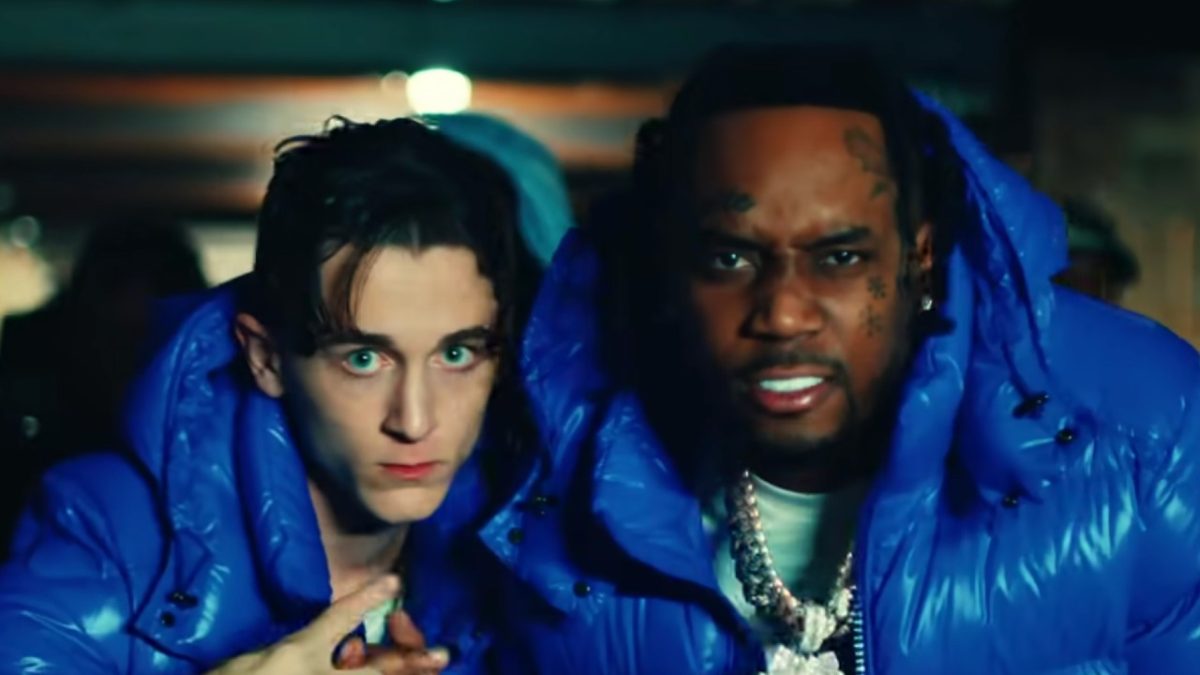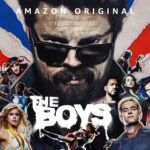From Concrete Jungle to Global Stage: Lil Mabu and the Evolution of Drill
The collaboration between Fivio Foreign and Lil Mabu in the song “Teach Me How To Drill” represents an interesting intersection within the evolving drill scene. Here’s how:
Bridging the Gap Between Generations:
- Fivio Foreign, established in the early 2010s Brooklyn drill scene, represents a more established figure.
- Lil Mabu, a rising star, embodies the newer wave of the genre.
Their collaboration bridges the gap between generations, potentially fostering a sense of unity and knowledge-sharing within the drill community.
Experimentation and Innovation:
- “Teach Me How To Drill” takes a playful and humorous approach, experimenting with the typical drill format. Fivio acts as a mentor, guiding the “newbie” Lil Mabu through the “drill 101.” This playful twist demonstrates the genre’s capacity for innovation and self-awareness.
Expanding the Audience:
- By teaming up, Fivio and Lil Mabu might reach a broader audience. Fivio’s established fanbase can be exposed to Lil Mabu’s fresh perspective, while Lil Mabu might benefit from Fivio’s larger fanbase. This collaboration potentially broadens the reach of both artists and the drill scene itself.
However, it’s important to acknowledge the potential criticisms:
- Commercialization Concerns: Some might argue that such collaborations are driven by commercial interests and dilute the genre’s authenticity.
- Inauthenticity Concerns: Critics might question the collaboration’s genuineness, suggesting it’s merely a marketing ploy rather than a genuine artistic connection.
Whether collaborations like “Teach Me How To Drill” represent a positive evolution or a potential pitfall for the genre remains open to interpretation. It highlights the ongoing dialogue surrounding drill music’s artistic merit, commercial viability, and its impact on the communities it represents.
Who is Lil Mabu?

The rhythmic rattle of hi-hats, the stark basslines, and a lyrical tapestry woven with the harsh realities of urban life – this is the soundscape of drill music. Emerging from the streets of Chicago and London, drill has carved its niche in the hip-hop landscape, pulsating with a raw energy that both enthralls and challenges listeners. In this concrete jungle, a young talent named Lil Mabu has risen, his music echoing the struggles and aspirations of a generation.
Lil Mabu, a Manhattan native, burst onto the scene in 2020 with the single “Miss Me.” His signature high-pitched flow and clever wordplay resonated with a generation grappling with the complexities of growing up in an environment often teetering on the edge. Unlike the braggadocio often associated with mainstream hip-hop, Lil Mabu’s lyrics paint a picture of resilience and survival, capturing the anxieties and frustrations of navigating a world marked by hardship.
However, drill music is not without its controversies. The genre’s stark portrayals of violence and its association with real-life gang culture have sparked debates about its potential glorification of negativity. Lil Mabu himself has faced criticism for his lyrics, with some arguing they contribute to the normalization of violence.
Yet, the reality is more nuanced. Artists like Lil Mabu are not glorifying violence; they are reflecting the realities they and their communities face. Their music serves as a powerful commentary on social issues, forcing uncomfortable conversations about systemic neglect and the lack of opportunities that often fuel cycles of violence.
Lil Mabu’s emergence signifies the evolution of the drill scene. He represents a new generation of artists who are not afraid to use their platform to address social issues head-on. His music serves as a testament to the power of expression, offering a voice to those often marginalized and unheard.
As the drill scene continues to evolve, Lil Mabu stands as a testament to its raw energy and potential for social commentary. Whether challenging the status quo or simply offering a glimpse into the realities of their world, artists like Lil Mabu ensure that the voices from the concrete jungle continue to be heard.
Where is Drill Rap Going?

Whether what we’re witnessing with Lil Mabu and the current landscape of drill music is truly an evolution is a complex question with no simple answer. It depends on how we define “evolution” and what aspects of drill we’re focusing on. Here are some arguments for and against considering it an evolution:
Arguments for Evolution:
- Sound and style: Drill has undeniably diversified since its Chicago origins. While retaining the core elements like fast, hi-hat driven beats and grim lyricism, variations have emerged. UK drill, for instance, incorporates darker melodies and piano sounds, while artists like Lil Mabu experiment with higher-pitched flows and melodic elements.
- Content and themes: While still often portraying the realities of street life, some argue that artists like Lil Mabu are moving beyond solely glorifying violence. They might include personal struggles, social commentary, and even stories of resilience alongside street narratives. This broader thematic range could be seen as an evolution.
- Audience and impact: Drill is no longer confined to underground scenes. Artists like Lil Mabu achieve mainstream success, sparking wider conversations about the issues they raise. This broader reach and potential for social impact could be considered an evolution of the genre’s influence.
Arguments against Evolution:
- Core characteristics remain: The essence of drill, its focus on street life, violence, and often explicit language, remains largely unchanged. Some argue that simply diversifying the sound or adding personal stories doesn’t fundamentally change the genre’s core identity.
- Criticism persists: The genre still faces criticism for potentially glorifying violence and contributing to real-life conflicts. Some argue that even if artists like Lil Mabu offer broader narratives, the overall impact of drill might not be changing significantly.
- Limited timeframe: It’s important to be cautious about declaring an “evolution” based on a relatively short timeframe. Drill is still a young genre, and its potential future trajectory is uncertain.
Ultimately, whether this is the evolution of drill rap is subjective and open to discussion. It’s crucial to consider all perspectives and acknowledge the complexities surrounding the genre and its impact.

Global Expansion
Drill music, once a hyperlocal phenomenon rooted in the struggles of Chicago and London’s streets, has undoubtedly undergone a global expansion. This expansion can be attributed to several key factors:
1. The power of the internet: Platforms like YouTube and streaming services have become powerful tools for music discovery, allowing drill to transcend geographical barriers. Fans worldwide can easily access and connect with drill music, fostering a global audience.
2. Shared experiences: While the specific realities depicted in drill music might differ based on location, the genre often taps into universal themes of struggle, hardship, and the search for identity. This resonates with young audiences from diverse backgrounds, creating a sense of connection across borders.
3. Local adaptations: The global drill scene isn’t just about passive consumption. Local artists are adapting the core elements of drill to reflect their own cultural experiences and musical influences. This creates unique subgenres like Brooklyn drill, French drill, and Brazilian drill, further enriching the global tapestry of the genre.
Examples of this global reach include:
- UK drill: Arguably the most prominent international scene, UK drill artists like Skepta, Stormzy, and Central Cee have achieved mainstream success, influencing global trends.
- European drill: Thriving scenes exist in France, Germany, the Netherlands, and Sweden, each with distinct styles and prominent local artists.
- Drill beyond the West: Drill has found a foothold in Australia, Brazil, and even parts of Africa, demonstrating its ability to resonate with diverse audiences.

It’s important to note that this global expansion also presents challenges:
- Cultural appropriation: Concerns exist regarding potential inauthenticity or appropriation when artists from different backgrounds adopt drill’s aesthetics without fully understanding its cultural context.
- Fueling local conflicts: Critics argue that drill’s portrayal of violence, even when not intended as glorification, might amplify existing tensions within certain communities.
Despite these challenges, the global reach of drill music is undeniable. It represents a fascinating example of how art forms can transcend borders, fostering connections and sparking conversations across cultures, while also raising questions about cultural exchange and responsible representation.








